David McFall R.A. (1919 - 1988)
Sculptor
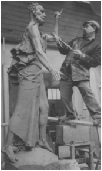
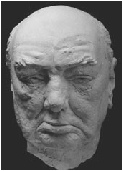
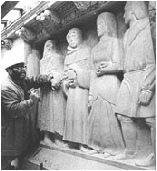


1949/2 Birth of Venus
Limestone torso (carved at City & Guilds Kennington London)
Exhibited Royal Academy Summer Exhibition 1949 Catalogue No. 1335
Royal Academy Summer Exhibition Illustrated Magazine 1949
Reference: Figure Quarterly Vol. 24 Spring 1959 page 55
According to the Greek myth Aphrodite (or Venus, her Roman name) was born when
the titan Chronos castrated Uranus, his father, whose severed genitals fell
into the sea and fertilized it. Aphrodite was born from the foam and by a
giant cockle was taken ashore at Paphos on Cyprus.
The Birth of Venus has been portrayed by many artists, painters and writers,
typically portraying not the actual birth, but the moment where, transported
by a shell (a metaphor for the female vulva), Venus lands at Paphos.
The best known painting is by Sandro Botticelli (1446 - 1510) in the Uffizi Gallery,
Florence. The goddess Venus emerges from the water on a shell, blown
towards shore by the Zephyrs, symbols of spiritual passions. She is
joined by one of the Horae, goddesses of the seasons, who hands her a flowered cloak.
Some experts believe it to be a celebration of the love of Giuliano di Piero de' Medici for Simonetta
Cattaneo Vespucci, who lived in Portovenere, a town by the sea with a local tradition of being the
birthplace of Venus. Botticelli himself also privately loved the beautiful Simonetta, who was de'
Medici's mistress. Simonetta is also believed to have been the model for Venus in this painting,
as well as for several other women in other Botticelli works, such as Primavera.
Photograph courtesy of the Royal Academy
All rights reserved

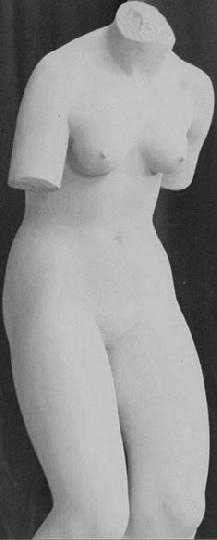
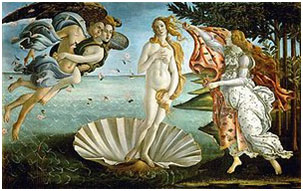
| Animals |
| Busts and Heads |
| Children |
| Churchill studies |
| Lettering |
| Medals coins plates |
| Reliefs |
| Stone carvings |
| Contemporary British Artists |
| On Epstein |
| Picasso |
| The art of portrait sculpture |
| Letters |
| Palliser |
| Son of Man |
| Press |
| Obituaries |
| Memorial address |